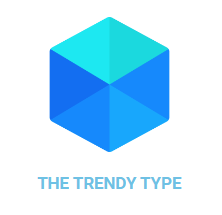Threads Opens Its Doors: Developer API Documentation and Sign-Ups Now Available
A New Era for Threads Development
Table of Contents
- A New Era for Threads Development
- Exploring the Threads API: Capabilities and Limitations
- Insights API for Performance Tracking
- Content Management and Interaction
- Character Limits and Textual Content
- The Future of Threads Development: A Collaborative Approach
- Early Adopters and the Threads Ecosystem
- Fediverse Integration: A Separate Path
Meta’s Twitter competitor, Threads, is taking a significant step towards becoming a more integrated platform by opening its doors to developers. Following the initial release of its API to select companies in March for testing, Threads has now unveiled comprehensive developer documentation and a sign-up sheet for interested parties ahead of the public API launch scheduled for June. This move signifies Meta’s commitment to fostering a vibrant ecosystem around Threads and empowering developers to build innovative applications that leverage the platform’s capabilities.
Exploring the Threads API: Capabilities and Limitations
The newly released documentation provides a detailed overview of the API’s current functionalities, endpoints, and limitations. This valuable resource equips developers with the knowledge needed to embark on their Threads-connected app development journeys. Key features highlighted in the documentation include:
Insights API for Performance Tracking
Developers can utilize the Insights API to gain valuable insights into the performance of Threads posts. This API allows retrieval of crucial metrics such as views, likes, replies, reposts, and quotes, enabling developers to track engagement and understand user interactions with their content.
Content Management and Interaction
The documentation also outlines functionalities for publishing posts and media through the API, retrieving replies, and troubleshooting common issues. This comprehensive coverage empowers developers to manage content effectively and facilitate seamless interactions within the Threads ecosystem.
Character Limits and Textual Content
Threads’ character limit for text posts is set at 500 characters, exceeding Twitter’s previous limit of 280 characters but falling short of X’s 25,000 character limit for paid subscribers. This provides a unique space for concise yet engaging textual content within the Threads platform.
The Future of Threads Development: A Collaborative Approach
Meta emphasizes its commitment to continuous improvement and collaboration with developers. The documentation will be regularly updated based on feedback received from the developer community. Additionally, interested developers can request access through a dedicated sign-up page, allowing Meta to gauge the level of interest and anticipate the types of applications that are likely to emerge alongside the public API launch.
Early Adopters and the Threads Ecosystem
Threads’ initial beta testers include prominent social media management tools such as Sprinklr, Sprout Social, Social Information Desk, Hootsuite, and tech news platform Techmeme. This diverse group of early adopters highlights the potential for Threads to become a valuable tool for businesses and individuals seeking to engage with their audiences in new and innovative ways.
Fediverse Integration: A Separate Path
While Threads has begun integrating with the broader fediverse, enabling connections with platforms like Mastodon, this functionality is currently managed through user settings within the Threads app itself. The API does not directly control or enable/disable fediverse sharing, suggesting that Meta may approach this integration differently.


